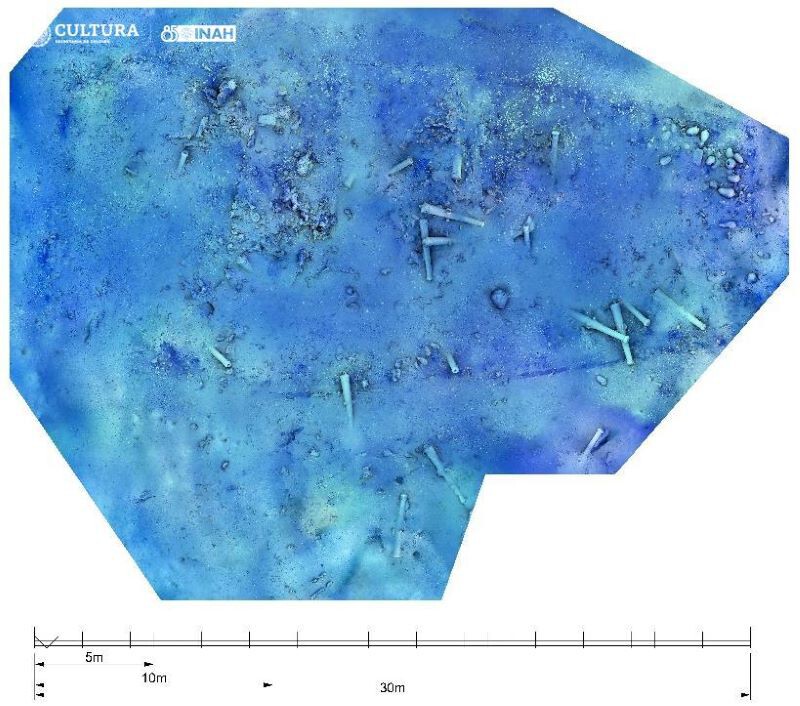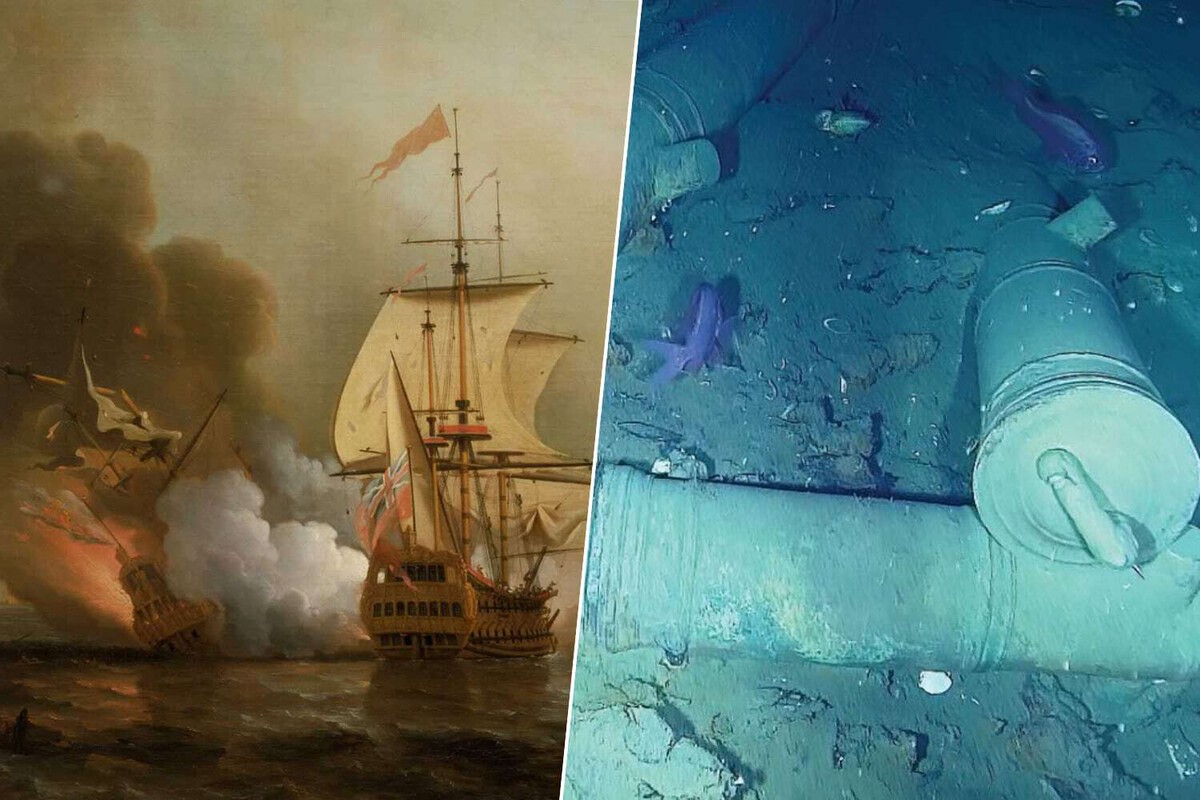The history of the San José galleon is very unusual. The ship left the shipyards of Guipúzcoa in 1706 bound for the Caribbean Sea, where it was loaded to the brim with gold, gems and jewels from mines in Peru, Bolivia and Mexico. It was an impressive ship, 40 metres long, with 64 cannons and a crew of 600, but it was sunk after an attack by British privateers in 1708, leaving only 10 survivors and that juicy treasure in the depths of the sea off the coast of Cartagena.
It is one of more than 1,500 Spanish ships sunk around the world, and Mexico and Colombia are collaborating to “rescue” these treasures that have been at the bottom of the ocean for more than 300 years. It has an estimated value of 20 billion dollars and is the subject of a real soap opera.
A soap opera. The story of the San José did not end when the ship hit the bottom. In fact, it may have only just begun. In 1981, the exploration company Search Armada claimed to have located the Spanish wreck and handed over the coordinates not to Spain, but to Colombia. The deal? Supposedly, access to half of the treasure.
However, in 2015, the Colombian government claimed to have found the wreck in a different location than previously indicated. This angered the treasure hunting company, which claimed that it was a strategy to prevent Colombia from having to share the treasure.
Without hesitation, former President Juan Manuel Santos proudly claimed that it was one of the most important treasures in Colombia, and everything pointed to Search Armada not seeing a penny. Meanwhile, Spain did not sit idly by and appealed to its sovereignty over the galleon.
Investigating. In 2024, with the wreck still in dispute, the Investigation and Accusation Commission of the Colombian House of Representatives opened an investigation against former President Santos. The reason? ‘Intrusion and looting’ of the Spanish galleon.
‘It’s not a treasure.’ The current Colombian government has a different point of view and, in May last year, declared the area around the wreck a protected archaeological site. Colombia’s Minister of Culture, Juan David Correa, said it was ‘the first time that an area of submerged archaeological heritage has been declared at such a depth, it is historic for Latin America. We already have a special underwater archaeological management plan.’
Protection. The aim, therefore, is to ensure the protection and conservation of the galleon, as stated by Alhena Caicedo, director of the Colombian Institute of Anthropology and History, and the door has not been closed to treating the wreck as shared heritage. The goal now is to see what the ship was carrying and catalogue it. It does not appear to be a treasure rescue mission, as Correa himself comments: ‘This is not a mission to extract something of economic value. What we want is to give Colombia the opportunity for a scientific and cultural mission that will have several stages and begins today.’

Mexico + Colombia. And that is where Mexico’s National Institute of Anthropology and History (INAH) comes into play. In an initiative called ‘Towards the heart of the San José galleon’, Colombian and Mexican researchers are collaborating to carry out this “recovery” process. Mexico has extensive experience in archaeological expeditions (with recent examples such as the entire network of the Mayan Train, the application of new techniques to explore the interior of pyramids and the mapping of underground rooms).
An underwater expedition is different, but they also have something to contribute. Colombian researchers asked INAH members about their experience on the Nuestra Señora del Juncal project, a ship that sank in 1613 in the Gulf of Mexico and which has parallels with the San José expedition. In addition, Colombia and Mexico have programmes to support archaeologists who are trained in both countries, similar to an Erasmus programme for archaeology.
Digitise everything. Mexico is therefore advising Colombia, but it is the Colombians who, using underwater robots, are exploring the San José and its surroundings in a four-phase programme:
- First phase (began in May 2024): an underwater research vessel with dynamic and acoustic positioning technologies comes into play, as well as a remote-operated vehicle with sensors whose mission is to reach the site.
- Second phase: generating images of the site to compile a record of archaeological evidence for the classification of materials and their origin.
- Third phase: preliminary conservation assessment to establish starting points for the level of deterioration of the elements.
- Fourth phase: digitally documenting the archaeological context using photogrammetry techniques for educational purposes.
Colombia’s plans seem clear and, according to the details of the different phases, the objective does not appear to be to remove everything found from the water, but rather to catalogue it so that we can see the condition of the ship and its cargo 300 years later (in addition to the riches it was carrying when it sank).
Next steps. In recent weeks, however, there have been important discoveries. The ICANH confirmed new ‘areas of interest’ at the site, with Chinese porcelain, ingots, weapons and coins that provide more information about the context of the sunken galleon. In addition, both the INAH and the Colombian Ministry of Culture have set October 2025 as the date on which they will detail the next steps of the mission.
The idea is to refine the “Towards the Heart of the Galleon” strategy with a view to presenting tangible results before the end of the current presidential term in 2026. It will then surely be time for the controversy between Spain, Colombia, the Qhara Qhara indigenous community, which is demanding rights to the treasure, and the company that claims to have discovered the wreck to move to a new level.

